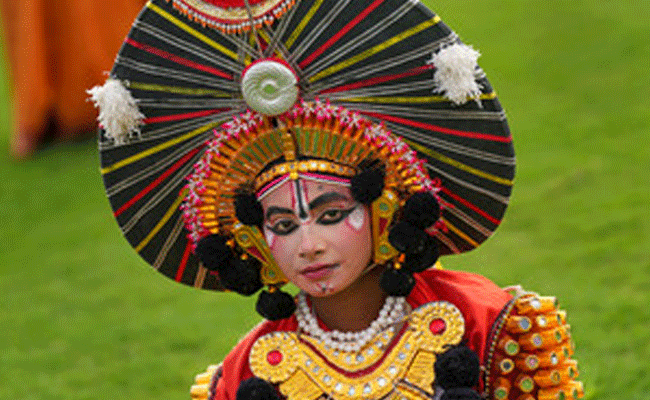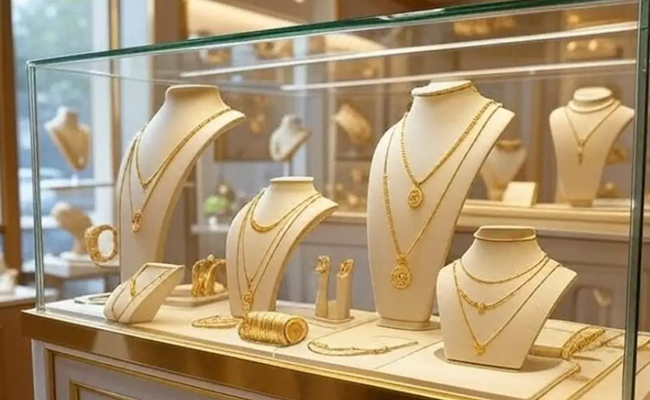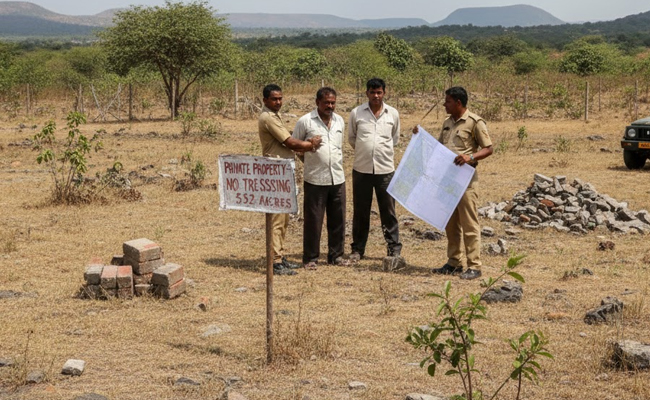Mangaluru (PTI): The recent state-level Yakshagana Sammelana established the fact that the rich folk art is thriving in coastal Karnataka and charting a new course for its future with more participation of women performers apart from reaching out to new audiences.
The two-day Sammelana held in Udupi on February 12 and 13 which had exhibitions, seminars and shows related to the traditional art form was successful in its intent.
The idea was to create a space for the art form in the entire state and spread the message of Yakshagana across the globe, with efforts made by the state department of Kannada and Culture and Sammelana president M Prabhakara Joshi.
Joshi, a Yakshagana scholar, said at the event that the government should pursue attempts to get UNESCO intangible cultural heritage recognition for the art form, and demanded that a task force be constituted to find a space for performances at national and international level cultural platforms.
On reconstructing Yakshagana in its entirety, he said the dance-drama art form should move from 'noise culture' towards 'voice culture'.
A matured theatre does not accept 'loud noise' and bright lighting system used during Yakshagana performances of late, which is not good for performers and the audience, Joshi added.
Tulu language and culture should be given due credit to the growth of Yakshagana. The performing troupes should think seriously on maintaining quality in performance and not push Yakshagana into deformity, he asserted during the event.
The traditional elements of Yakshagana, if lost, will be a 'permanent cultural loss', the scholar pointed out.
Yakshagana continues to be a popular art form in Dakshina Kannada, Udupi, Uttara Kannada, Chikkamagaluru and parts of Shivamogga district of the state and Kasaragod in Kerala.
Around 40 Yakshagana Melas are being held this season also.
Yakshagana is said to have originated between the 11th and 16th centuries, remaining a predominantly male practice until recently. Many new influences from theatre, temple arts, folk and rural arts, cinema and the artists' own imaginations, have all been interwoven over a period of several hundred years.
Initially, the medium of narration was in Sanskrit, but Tulu and Kannada, the local languages of coastal Karnataka, are more popular now. The dance drama has evolved to become a year-round show performed by professional troupes, which means the audience now require tickets to watch them.
As it stands today, Yakshagana is progressively becoming more inclusive, not merely with regard to its content, form or audience but also in terms of who the performers are.
"The performances on stage are different in the southern regions of Karnataka from that of the northern regions of the state," veteran Yakshagana scholar and artiste Bellige Narayana Maniyani told PTI.
The southern form of Yakshagana had assimilated certain aspects of the classical art form of Kathakali in Kerala. Though voice is essential for the artiste's performance on the Yakshagana stage, the shows beyond Kundapur in Udupi in the north are different, he said.
The Yakshagana theatre style is mainly found in coastal regions of Karnataka in various forms. Towards the south from Dakshina Kannada to Kasaragod, the form of Yakshagana is called 'Thenku thittu' and towards the north from Kundapura up to Uttara Kannada it is called 'Badaga thittu', he said.
Both these forms are equally played all over the region. Yakshagana is traditionally presented from dusk to dawn. Its stories are drawn from puranas (ancient Hindu texts) like Mahabharata, Ramayana, Bhagavata and other epics of Hindu, Jain and other ancient traditions.
Maniyani also echoes Joshi's views on maintaining the traditional form of Yakshagana. "Kathakali was maintained in its traditional grandeur in Kerala. Though Yakshagana is still popular and attracts a good audience in Karnataka and Kerala's Kasaragod district, no meaningful effort was made to protect its traditional form," Maniyani said.
The art form of Yakshagana, which combines dance, music, dialogue, costume, make-up, and stage techniques with a unique style and form, originated in Dakshina Kannada district of Karnataka and Kasaragod in Kerala.
Parthisubha, one of the pioneers of Yakshagana, hails from Kasaragod district, he said. Like all art forms in India, its themes are related to the worship of God.
A Yakshagana performance begins in the twilight hours with an initial beating of the drums of several fixed compositions. This may last for up to an hour before the actors finally arrive on the stage. The actors wear resplendent costumes, head-dresses and face paints.
A performance usually depicts a story from the Kavya, (epic poems) and the puranas. It consists of a story teller (bhagawatha) who narrates the story by singing (which includes prepared character dialogues) as the actors dance to the music, portraying elements of the story as it is being narrated.
Besides the need for protecting the traditional form, one of the topics that came up for discussion at the Yakshagana Sammelana in Udupi was the entry of young women to Yakshagana stages, which has drawn more audience to the performances in the last few years.
"The young women who enter the field are very enthusiastic and some of them have come up with very good performances," Maniyani, who still follows all the melas in the region, said.
Richa Bhavanam, a freelance photographer who toured the coastal district a few years back, had encountered women who were into Yakshagana.
She quotes in her photo essay a woman Yakshagana artiste Sai Suma as saying, "We don't remain ourselves, we completely drown in the character. The more we perform, the more Yakshagana changes our personalities. Our voice becomes louder, our walks more masculine and people say why you are walking like that."
The first all-women's troupe was put together in 1989 by Poornima Rai, one of the pioneers of 'Mahila Yakshagana'. "At that time, there was not much opportunity for growth in Yakshagana. The situation is a lot better now as parents today are much more supportive," says Poornima, who currently teaches around 200 students at her home in Surathkal on the outskirts of Mangaluru city.
At a session on women's contribution to Yakshagana in the Udupi Sammelana, Shobha Maravanthe, assistant professor at a college in Shivamogga, said: "To tell our history, we need to create a stage".
Maravathe, who comes from a family of Yakshagana artistes, said a different yardstick is necessary to recognise the work of women Yakshagana troupes.
Women bhagawata (singer and director of Yakshagana) have their own constraints and cannot sing in the tone that a male bhagawata sings. Though it is a sense of liberty for women artistes to discharge male roles, the women artistes face constraints in being in the male roles for a long time, she said.
Senior Yakshagana artiste Vidya Kolyur said women artistes should come out of the inferiority complex and work towards enriching the art form.
The women artistes outperform their male artistes while donning female roles like Damayanti and Shakuntala. "In certain scenes, the womanhood in us brings out the right expression which our male counterparts cannot do," she asserted.
Yakshagana performances, which had suffered a setback due to the pandemic in the last two years, have restarted their Melas afresh. The district administrations of the coastal region have also relaxed restrictions for performances during night.
Let the Truth be known. If you read VB and like VB, please be a VB Supporter and Help us deliver the Truth to one and all.
Noida (PTI): A 46-year-old businessman was burnt to death after his moving car caught fire in Uttar Pradesh’s Gautam Buddha Nagar district, police said on Tuesday.
According to police, the victim was identified as Rajkumar Singhal, who was engaged in the paint business. The incident occurred late on Monday night near Sorkha village under the Sector 113 police station area.
Station House Officer Krishna Gopal Sharma said Singhal was driving towards Parthala Chowk when his vehicle suddenly caught fire for reasons yet to be ascertained.
Singhal was unable to get out of the car and died in the blaze, the SHO said.
Fire tenders reached the spot after receiving information, but the car had already been gutted, police said. The body has been sent for post-mortem examination and an investigation is underway.
Police suspect the presence of paint or other inflammable material in the car may have caused the fire to spread rapidly.





